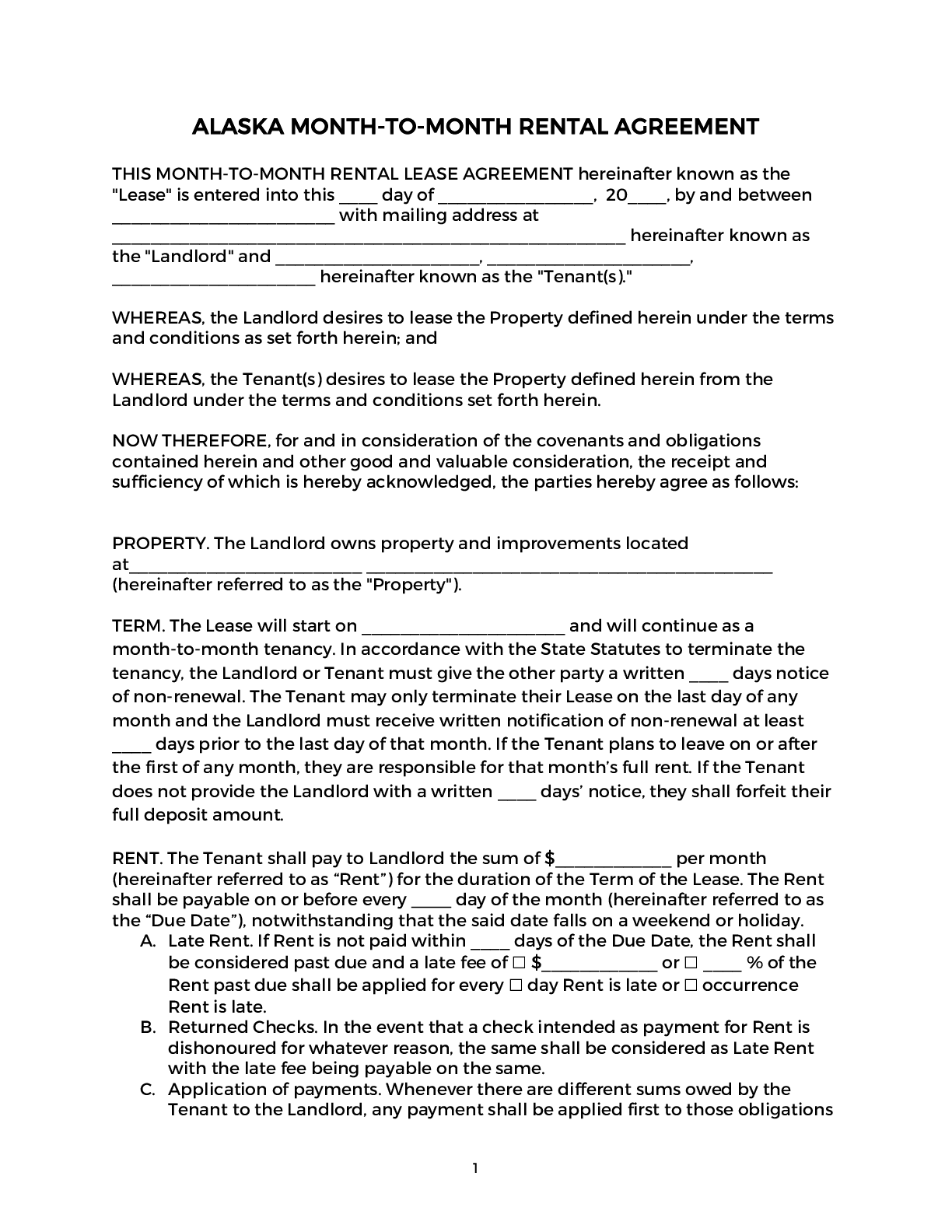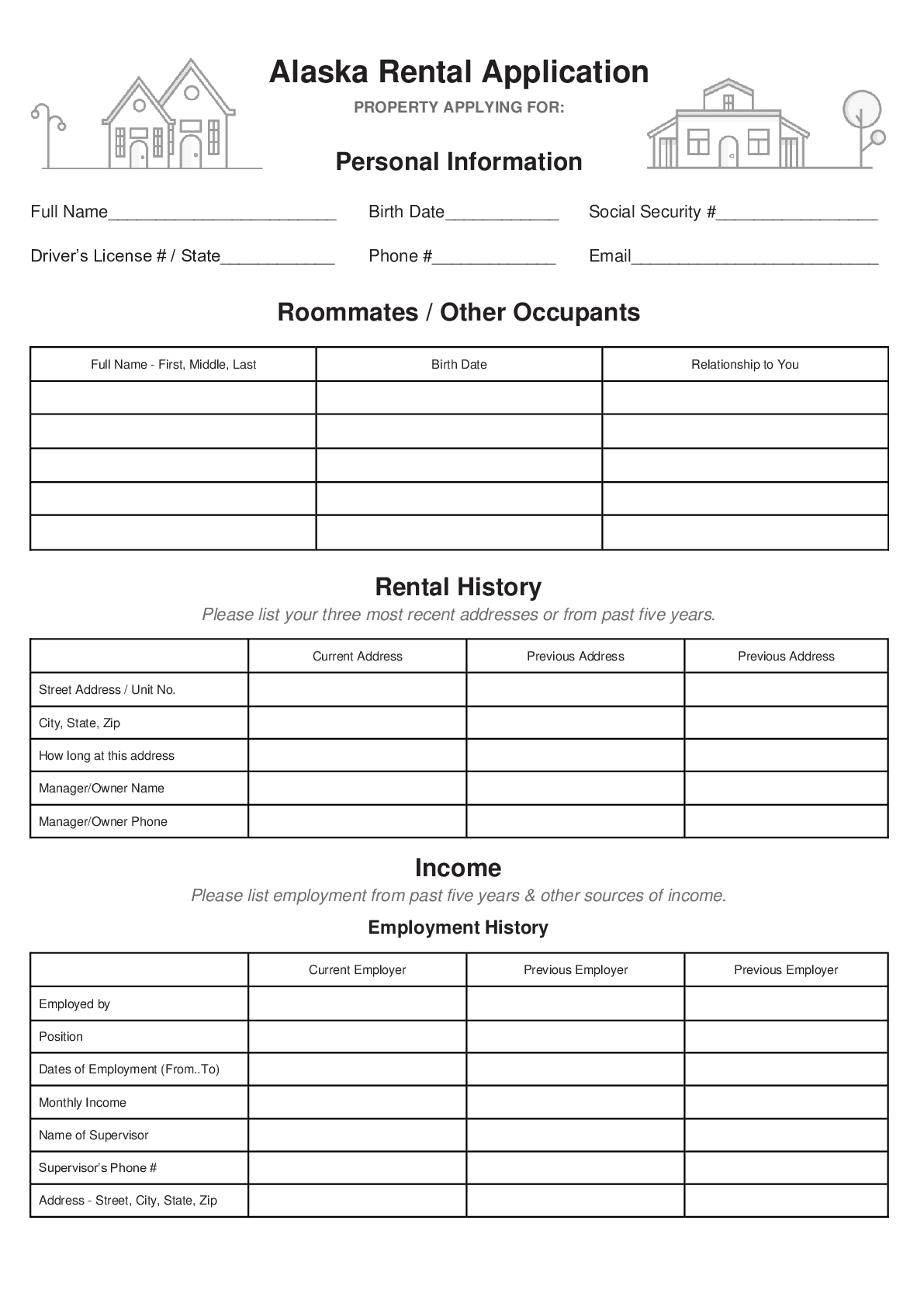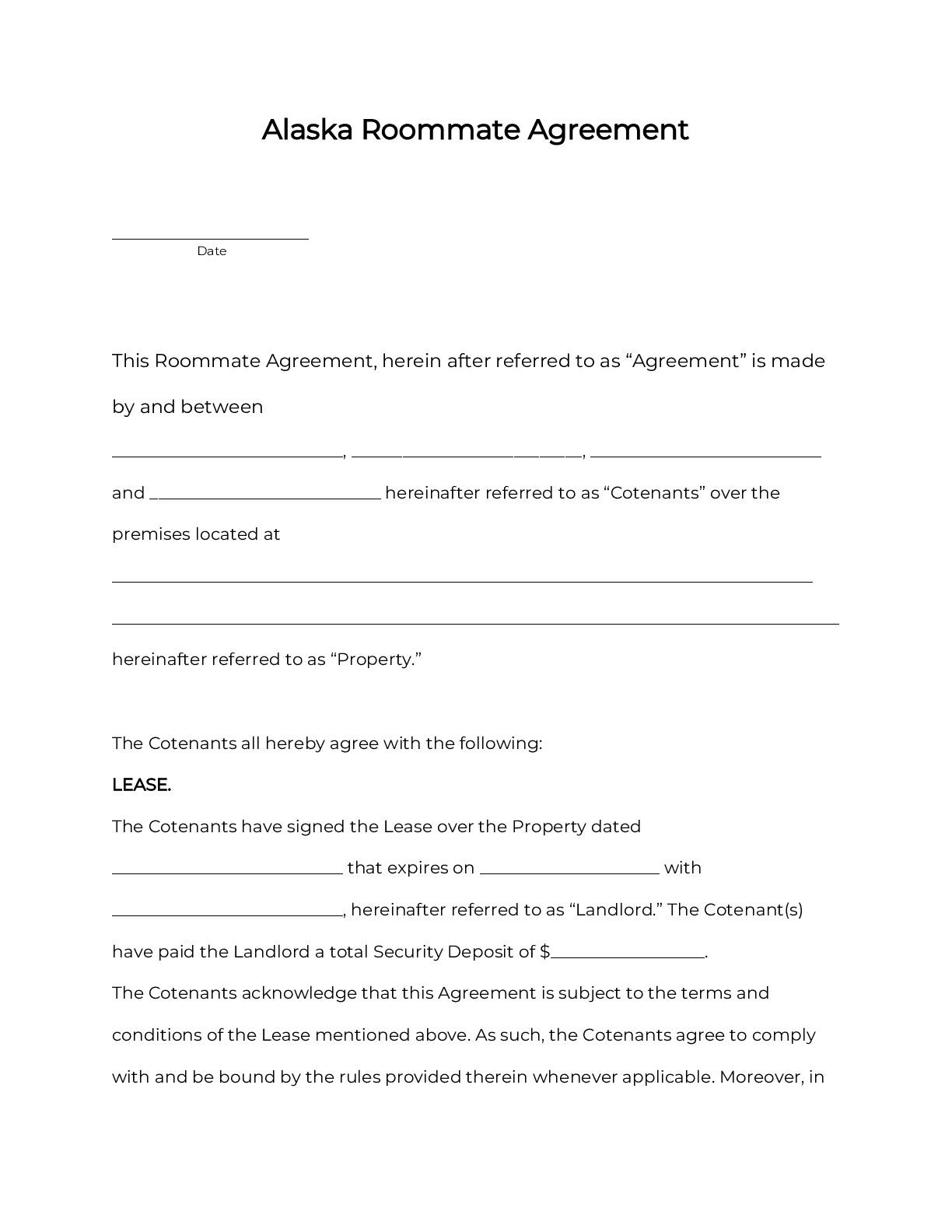An Alaska rental agreement is a legal contract between a landlord overseeing a rental property and a tenant who wishes to use it. Alaska landlord-tenant law governs and regulates these agreements.
Alaska Rental Agreement Types
An Alaska roommate agreement is a legal contract between two or more people (“co-tenants”) who share a rental property according to rules they set, including for things like splitting the rent. This agreement binds the co-tenants living together, and doesn’t include the landlord.
Alaska Required Residential Lease Disclosures
- Landlord’s Name and Address (required for all leases) – Alaska leases must contain the name and address of the landlord or authorized agent. This enables smooth communication of any important legal notice.
- Tenant Occupancy/Absence Disclosure (required for all leases) – Alaska tenants must provide notice to the landlord when planning an absence of seven days or more from the rental property.
- Withholding Security Deposits (required for all leases) – Alaska landlords must notify tenants that they have the option to withhold the security deposit for noncompliance with specific lease terms.
- Lead-Based Paint Disclosure (required for some leases) – For any property built before 1978, federal law requires that a Alaska residential lease must contain a lead-based paint disclosure with an EPA informational pamphlet, plus notice of any lead hazards on the property.
To learn more about required disclosures in Alaska, click here.
Alaska Landlord Tenant Laws
- Warranty of Habitability – Alaska landlords can only rent out habitable property, which means providing certain features essential to basic health and safety like heat, plumbing, electricity, and sound structural elements. Landlords must repair any issues within 10 days after proper notice from the tenant. Failure to repair lets a tenant sue the landlord or terminate the lease. Tenants usually aren’t allowed to repair and deduct, or withhold rent.
- Evictions – Alaska landlords may evict for rent default, lease violations, or illegal acts, among other things. Before filing eviction, landlords must serve tenants with prior notice to pay, comply or quit, depending on the eviction type. This means most evictions in Alaska take weeks to months.
- Security Deposits – Alaska caps security deposits at a maximum of two months’ rent (except for some property rented at over a $2,000 monthly rate). A landlord must return any unused portion of a security deposit to the tenant within either 14 days of the notice of lease termination, or 30 days without notice.
- Lease Termination – Alaska lets tenants terminate a month-to-month lease with 30 days of advance notice (14 days, for week-to-week leases). A fixed-term lease usually can’t be terminated early without active military duty, landlord harassment, uninhabitable property, or domestic abuse.
- Rent Increases and Fees – Alaska landlords must provide at least 30 days of advance notice before increasing rent on a month-to-month lease. The state does not cap late fees, but returned checks fees are capped at $30.
- Landlord Entry – Alaska landlords may enter rental property for purposes reasonably related to the tenancy, such as maintenance, inspections, and property showings. Before entering, they must provide at least 24 hours of advance notice, unless it’s an emergency.
- Settling Legal Disputes – Alaska allows its small claims courts to hear landlord-tenant disputes, as long as the amount in controversy is under $10,000. The state does not allow evictions in small claims. Most landlord-tenant issues fall under a three-year statute of limitations.
To learn more about landlord tenant laws in Alaska, click here.
Sources
- 1 Alaska Stat. § 09.68.115(a)
-
In an action against a person who issues a check that is dishonored, the plaintiff may recover damages in an amount equal to $100 or triple the amount of the check, whichever is greater, except that damages recovered under this section may not exceed the amount of the check by more than $1,000 and may be awarded only if
(1) the plaintiff makes a written demand for payment of the check at least 15 days before commencing the action; and
(2) the defendant fails to tender, before the action commences, an amount equal to the amount of the check plus up to a maximum $30 fee.
Source Link









